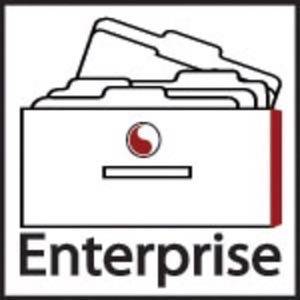Linking the value that a product or service provides to a price is an art, rarely a science. Software pricing, in particular, has suffered from this being done poorly. The old licensed-software model does not cut it anymore. Businesses won’t stand to pay for a large number of software licenses they may or may not use, and then pay for maintenance on top of that.

One increasingly popular method of pricing software (especially SaaS) is based on the number of registered users of the product per month. SalesForce uses this model for most of its offerings and has a different price for each level (Professional, Enterprise, etc.). GroupSwim, the company I work for, also uses this model for collaboration.
For software that serves enterprise employees, the number of registered users is a good indicator of the value that a group derives from the product. Companies need only add the employees who will actually use the software, not everyone in the company. Metrics based on internal users have potential, but the application would need to be very specific. (Zoho uses a number of invoices to price its invoice module, which makes perfect sense.)
One downside to counting the number of users of a product is that people usually don’t “quit” or unregister themselves. The onus is on the business to remove users who don’t use the service regularly or who leave the company. It would surprise you how much trouble companies have managing this process. Money flies out the window when they don’t manage subscriptions or licenses efficiently.
The other school of thought is to base prices on some kind of usage or activity metric. Lithium and GroupSwim Community are products for large external customer and partner communities; both companies use page views to charge customers. In theory, this metric is a good indicator of value because it reflects how much users are actually using the product or visiting the website, especially if you have a large number of users who use the product infrequently.
But there are disadvantages to this method, too. First, how do you measure page view? With the advent of AJAX, video, and other technologies, the page view doesn’t always reflect how much users are using a product.
Secondly, a high page view doesn’t necessarily mean that the customer is benefiting from the product. For example, many users could very well be clicking all over a website trying in vain to find certain information. Has this person derived value from the website or are they merely a frustrated user who could not find anything they were looking for?
One reason the usage model could make sense is that research has proven that the proportion of users who consistently use an external website tends to be small, relative to the entire community. A software company could try to identify these frequent users and charge only for their usage. But this is a rat hole. Rather, if a lot of people are visiting the website often, they are likely deriving value, and the customer would be charged accordingly. If the website is rarely visited, then it isn’t adding value, and the price thus drops. Another company that has adopted usage-based pricing is Vertical Response; it charges based on the number of emails sent, not the number of users or administrators.
As you can see, there are many models to follow for pricing, especially with SaaS. No doubt, things will evolve in the coming years. As reporting and metrics continue to improve, pricing models will likely better reflect value and usage. What do you think?










